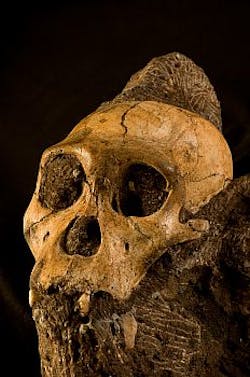X-ray tomography images early human skull and brain
A project led by researchers at theUniversity of the Witwatersrand (Johannesburg, South Africa) has resulted in the production of the highest resolution x-ray scan ever made of the skull of a 1.9 million-year-old human ancestor.
More than 80 scientists from institutes in Germany, US, UK, Australia, South Africa, and Switzerland collaborated on the project, including scientists from the European Synchrotron Radiation Facility (ESRF) (Grenoble, France) where the x-ray micro tomography scan was performed.
The well-preserved cranium of the so-called MH1Australopithecus sediba -- which was found in South Africa -- was scanned at the ESRF at a resolution of around 45 microns. Thanks to this high resolution, incredible details of the anatomy of sediba's skull were revealed without damaging the specimen.
The use of synchrotron x-rays was instrumental in the production of the images of the skull, since the skull of MH1 was still full of bedrock and only thex-ray source at the ESRF could penetrate deep into the fossil to reveal the cranium’s interior shape at the desired resolution.
Leaving the rock inside the cranium also ensured that its delicate inner surface was not damaged.
-- Posted byVision Systems Design
